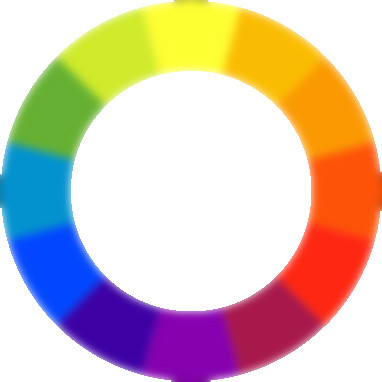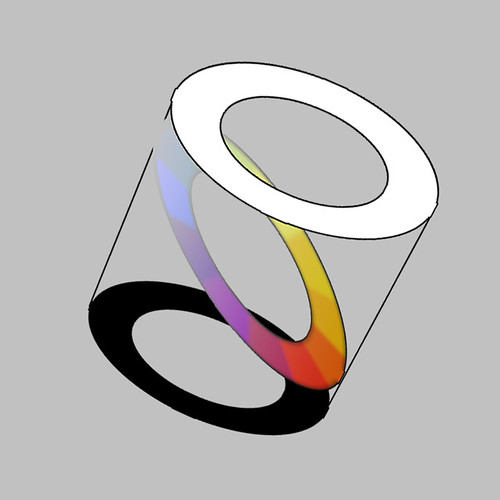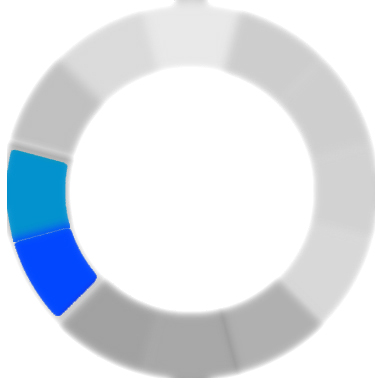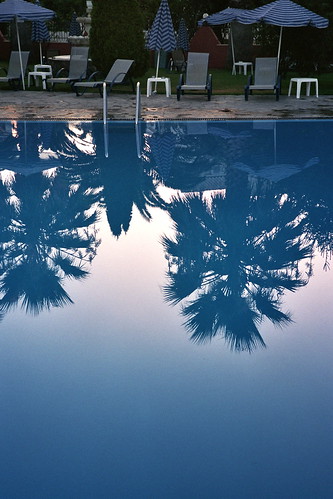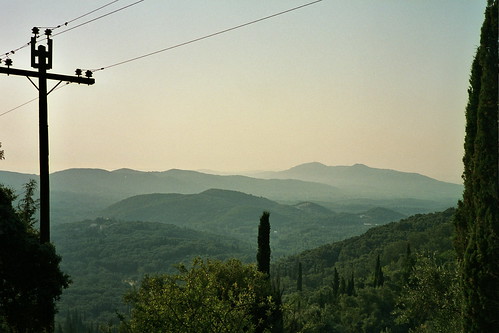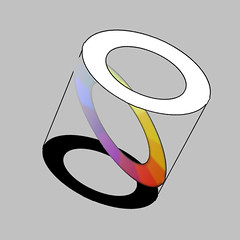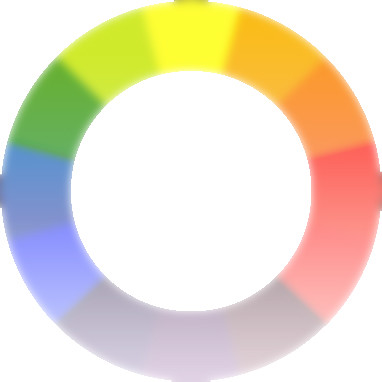Even when I was a child I can remember looking at that water lily painting that Claud Monte did and wondering if he had seen those colours in some different way to the way I did. I had no thought or concept of colour theory or perception and philosophy wasn't in my dictionary back then, but over the years as facts presented themselves or the Beeb broadcast some relevant Horizon program I cobbled together a vague understanding of how and why we see colour as we do and how I can make use of that understanding.
600 million years ago when the first multi cellular organisms appeared those that were more sensitive to light ate those that were less. Then later those that were more sensitive to changes in the light ate those that were less sensitive to changes in the light. That went on for a bit until everything moved about had eyes of some sort and our ancestors were up a tree in Mozambique looking for berries.
Where those that saw the world like this prospered;
http://farm3.static.flickr.com/2587/3739310065_710e25c2ba.jpg
more than those that saw it like this,
http://farm3.static.flickr.com/2421/3740104310_e06c748fd9.jpg
So by the time modern man came along he had an eye that had a sensor that had four components. A set of cells (the so called rods) to detect light and dark with something like a 24 stop range, well mine have anyway. And for colour a set cells (cone cells) that are divided into three different types each sensitive to the three Rood primary colours (more of Rood later) all a bit like my Canon printerís ink-set
I should more properly say modern woman, modern man isnít as well adapted around 10% being colour-blind, perhaps the men less gathering and more hunting (or chatting about flint)
Now the eye has a few limitations, it is specialised in a narrow frequency band; it de-saturates in low light and the massive 160íish degree FOV reduces the refresh rate down to around 15 frames per second, (a domestic cat is around 80 fps which explains how they catch flies and why they don't watch telly). However it has one huge advantage in that our brains uses a very advanced version of Photoshop so most of the time so we hardly notice our own limitations.
Mankind then bumbled along using natural pigments to decorate themselves and their surroundings' until well into the renaissance, colour being used symbolically as likely as not. The Virgin Mary is almost always painted in blue clothing in the middle-ages simply because the pigment, ultramarine (literally over-the-sea) blue, was made from Lapis lazuli from Afghanistan and was hideously expensive so was representative of her status.
In the 16 century, having made rules for everything else, attempts were starting to bring reason to colour, Newton was the about the first to make some sense, although attempts were made earlier. From observations of light refracted by prisms Newton came up with a circular diagram with 7 segments and 3 elemental colours, and then it all starts getting rather complicated, ever more complex models being constructed to represent perceived colour, in turn Maxwell, Rood and Munsell were among many who had a go, one was even called Boring which they all are.
Rood at the time was a bit of a darling for the impressionists, and Pointillism was based almost completely on his model, but to my eye non really describe what I actually see.
What they were up against was this; look at the bag, chances are you can tell what colour it is ...
http://farm4.static.flickr.com/3484/3740107254_28f34935d2.jpg
... despite the strong cyan filter
so this doesn't come as much of a surprise
http://farm3.static.flickr.com/2595/3739309869_02ee65f11b.jpg
until you see the two bags side by side, that is
http://farm3.static.flickr.com/2527/3740107460_a1f284ec6e.jpg
Which is why one doesn't see the red colour cast under tungsten lights until the prints come back from the chemist
So after all that the rational scientists came up with the ... the colour wheel, bit of a disappointment that
Oh, and those colour modes in photoshop that no one quite sure what to do with.
This is what Rood came up with, he was an American physicist who took up painting and started to a apply science to art, and published a book on the subject towards the end of 19th century. It looks a bit archaic and unscientific with all those pigment names but one has to remember there were almost no synthetic pigments at the time.
http://farm3.static.flickr.com/2542/3742309410_d47a54bfef.jpg
A chap called Perkin stumbled on Mauveine, a synthetic mauve while looking for a cure for malaria, became filthy rich and spawned a whole generation of wanabe organic chemists that went on to develop the modern pigments and dyes, so colour film I suppose is all the fault of a mosquito
The arts at the time were for the firs time undergoing revolutionary change, previous generations had looked to build on what already existed, but all that changed with the Pre-Raphaelites who while not strictly speaking Avant-garde they were definitely revolutionary. The world had already been confused by the abstractions of Turnerís later work, John Ruskin burned the porno stuff so Turner never got true recognition.
So in the finale years of the 19th c it wasn't surprising when the impressionists came along and gave the world the other barrel, armed with photography, some newly developed colours in tubes! And these new fangled colour ìtheoriesî they were the first truly Avant-garde group.
When I first joined the wonderful world of work I spent the first few months grinding pigments with a knife and marble pallet, so I can see how liberating the tube of paint would be.
A few minutes in Photoshop makes Roodís triangle more understandable
http://farm3.static.flickr.com/2487/3764823277_69b1be4167.jpg
and that begat this type of thing, which is starting to look almost modern
http://farm4.static.flickr.com/3443/3765983046_f4a02ed1b2.jpg
Rood then envisioned a cylinder with that wheel in the centre and black and white at either end
http://farm3.static.flickr.com/2648/3766163228_c43177fc50.jpg
in such a way that a diagonal section would look like this
http://farm4.static.flickr.com/3499/3766223270_32ecd1640d.jpg
whenever I have anything to do with Colour Spaces it's that image that comes to mind, Rood sadly predated Photoshop by over a century so never got the full credit for making an already complex system even more headache inducing
All these perception things are very subjective so none of them are strictly speaking theories or rules, simply tendencies but having said that there are some handy bits and bobs
The Natural Order of Colours ... or how to accessorise and colour coordinate soft furnishings (in a manly way)
A bit of jargon first, so one can sound knowledgeable at exhibitions, coordinate and complementary colour, that's complementary as in
balanced or opposite as opposed to complimentary as in
that pink really suit you, would you like to go for a drink later on?
and coordinated as in Laura Ashley's. I'm actually going to use Harmony and Dissonance for the sake of simplicity.
So here's how it works, in any horizontal section through the colour space I proposed, colours in any adjacent portions are in harmony, match or coordinate. Those combinations tend to be relaxing and calming.
http://farm4.static.flickr.com/3426/3768906598_8804477d45_o.jpg
like this
or this
















